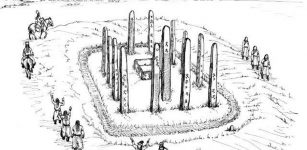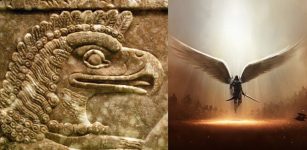A Graffiti Inscription With The Name Of Knight Adrian von Bubenberg – Found On Mount Zion In Jerusalem
Conny Waters - AncientPages.com - Based on ancient written sources it is known that Adrian von Bubenberg came on a pilgrimage to the Holy Land in 1466.
More than five centuries later, in a research project documenting pilgrims’ inscriptions, Michael Chernin and Shai Halevi of the Israel Antiquities Authority discovered a graffiti of his name and family emblem on a wall in the “King David Tomb Complex” on Mount Zion, Jerusalem.
An inscription bearing the name of Swiss noble Adrian von Bubenberg, found in King David's Tomb in Jerusalem. Image credit: Shai Halevi/ Israel Antiquities Authority
The archaeologists of the Israel Antiquities Authority Jerusalem Region has recently been carrying out a unique project in the “King David Tomb Complex” on Mount Zion. Their work is focusing on documenting graffiti and ancient inscriptions left on the walls by Christian and Muslim pilgrims.
They have revealed more than 40 inscriptions in different languages and the family emblems of medieval knights. The researchers were not expecting to discover the inscription of Knight Adrian von Bubenberg, one of the admired heroes of Switzerland.
However, the decipherment of the hidden graffiti was made possible by advanced technological methods developed by the Israel Antiquities Authority to research the Judean Desert scrolls.
Statue of Adrian von Bubenberg, in Bern, Switzerland. Image credit: Wikimedia Commons
These technologies, using multispectral photography and different wavelengths invisible to the human eye, bring inscriptions that have faded and erased over the years to light.
“In the Mamluk period, between 1332–1551, the building complex adjacent to the traditional Tomb of King David was owned by the Monks of the Franciscan Catholic Order,” said Michael Chernin and Shai Halevi of the Israel Antiquities Authority, who leads the project.
“The building served as a monastery and a hostel for the western pilgrims, who left their mark on the walls. Technological methods developed today enable reading the faded inscriptions.”
Amongst the inscriptions and graffiti, the researchers were stunned to discover a charcoal inscription with the name and the heraldic emblem of the family of Adrian von Bubenberg, a Swiss military man and politician from the 15th century, admired to this day as a Swiss National hero.
Von Bubenberg was born to a noble family in 1424. After long service as Mayor of Bern, he gained fame in 1476 when he led the Swiss Confederate army in the Battle of Murten and defeated the army of Charles the Bold, Duke of Burgundy, who threatened the independence of Switzerland.
Following this glorious victory over one of the strongest armies in Europe, the Swiss soldiers gained prestige as fierce fighters who did not fear more powerful enemies. This reputation enabled Switzerland to maintain its independence amongst more extensive and aggressive neighboring states until modern times.
After he died in 1479, and in gratitude for his protection of Bern and Switzerland, von Bubenberg was buried in a place of honor in the Cathedral of Bern.
A statue of Adrian von Bubenberg adorns one of the central squares of Bern, and many streets in Swiss cities are named after him. Since his son, Adrian (II) von Bubenberg (1458–1501), also visited Jerusalem, it is impossible to determine whether father or son wrote his name.
Still, the discovery of the Israel Antiquities Authority researchers provides direct evidence for the connection between medieval Switzerland and Jerusalem.
See also: More Archaeology News
“The research carried out in Jerusalem embraces religions and cultures worldwide. Believers, pilgrims, and visitors seeking to contact sanctified Jerusalem left traces that the Israel Antiquities Authority researchers reveal and record daily,” said Eli Escusido, Director of the Israel Antiquities Authority.
The research results were presentedat the joint conference of the Israel Antiquities Authority, the Hebrew University, and Tel Aviv University on “New Archaeological Studies in Jerusalem and the Vicinity.”
Written by Conny Waters - AncientPages.com Staff Writer






















